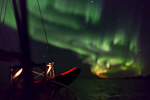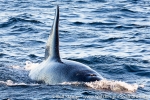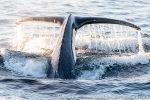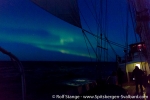-
current
recommendations- Liefdefjord
New page dedicated to one of Spitsbergen's most beautiful fjords. Background information and many photos.
- New Spitsbergen guidebook
The new edition of my Spitsbergen guidebook is out and available now!
- Liefdefjord
New page dedicated to one of Spitsbergen's most beautiful fjords. Background information and many photos.
Page Structure
-
Spitsbergen-News
- Select Month
- June 2025
- May 2025
- April 2025
- March 2025
- February 2025
- January 2025
- December 2024
- November 2024
- October 2024
- September 2024
- August 2024
- July 2024
- June 2024
- May 2024
- April 2024
- March 2024
- February 2024
- January 2024
- December 2023
- November 2023
- October 2023
- September 2023
- August 2023
- July 2023
- June 2023
- May 2023
- April 2023
- March 2023
- February 2023
- January 2023
- December 2022
- November 2022
- October 2022
- September 2022
- August 2022
- July 2022
- June 2022
- May 2022
- April 2022
- March 2022
- February 2022
- January 2022
- December 2021
- November 2021
- October 2021
- September 2021
- August 2021
- July 2021
- June 2021
- May 2021
- April 2021
- March 2021
- February 2021
- January 2021
- December 2020
- November 2020
- October 2020
- September 2020
- August 2020
- July 2020
- June 2020
- May 2020
- April 2020
- March 2020
- February 2020
- January 2020
- December 2019
- November 2019
- October 2019
- September 2019
- August 2019
- July 2019
- June 2019
- May 2019
- April 2019
- March 2019
- February 2019
- January 2019
- December 2018
- November 2018
- October 2018
- September 2018
- August 2018
- July 2018
- June 2018
- May 2018
- April 2018
- March 2018
- February 2018
- January 2018
- December 2017
- November 2017
- October 2017
- September 2017
- August 2017
- July 2017
- June 2017
- May 2017
- April 2017
- March 2017
- February 2017
- January 2017
- December 2016
- November 2016
- October 2016
- September 2016
- August 2016
- July 2016
- June 2016
- May 2016
- April 2016
- March 2016
- February 2016
- January 2016
- December 2015
- November 2015
- October 2015
- September 2015
- August 2015
- July 2015
- June 2015
- May 2015
- April 2015
- March 2015
- February 2015
- January 2015
- December 2014
- November 2014
- October 2014
- September 2014
- August 2014
- July 2014
- June 2014
- May 2014
- April 2014
- March 2014
- February 2014
- January 2014
- December 2013
- November 2013
- October 2013
- September 2013
- August 2013
- July 2013
- June 2013
- May 2013
- April 2013
- March 2013
- February 2013
- January 2013
- December 2012
- November 2012
- October 2012
- September 2012
- August 2012
- July 2012
- June 2012
- May 2012
- April 2012
- March 2012
- February 2012
- January 2012
- December 2011
- November 2011
- October 2011
- September 2011
- August 2011
- May 2011
- April 2011
- March 2011
- February 2011
- January 2011
- December 2010
- November 2010
- September 2010
- August 2010
- July 2010
- June 2010
- May 2010
- April 2010
- March 2010
- February 2010
- November 2009
- October 2009
- August 2009
- July 2009
- June 2009
- May 2009
- April 2009
- March 2009
- February 2009
- January 2009
- December 2008
- November 2008
- October 2008
- August 2008
- July 2008
- June 2008
- May 2008
- April 2008
- March 2008
- February 2008
- April 2000
- Select Month
-
weather information
-
Newsletter

| Guidebook: Spitsbergen-Svalbard |
Home
→ October, 2016
Monthly Archives: October 2016 − News & Stories
Senja – 31th Oktober 2016
Mon
31 Oct
2016
I just have to add 2 photos from yesterday. Later in the evening, the northern light really came out nicely. The situation was far from ideal for photography, as the ship was moving on the outer side of Senja, where there will always be some swell. Moderate last night, but any movement is deadly for quality shots of northern lights. So I was happy to have a good prime lense (24 mm f1.4) and a full frame camera, pulling the ISO value up to a rather extreme 12800. Well, I guess that’s what you have such a camera for, isn’t it? So you can get something even with a shutter speed of 1/10 of a second, the slowest that this kind of movement could tolerate, more or less.
- gallery anchor link: #gallery_1084
Click on thumbnail to open an enlarged version of the specific photo.
So this is what I got. As mentioned, no quality pix, but … nice, or not 🙂
Kvalsund – 30th Oktober 2016
Sun
30 Oct
2016
Sometimes you can fit a trip into a day. People often say at the end of a good day that they might go home tomorrow. That is obviously just a joke and not meant seriously.
Today, however, you might say that and actually almost even mean it (almost). It was just 24 hours ago that everybody came on board in Tromsø, we left from there just 12 hours ago. Since then, we spent a good part of the day watching orcas. Not just a few, not just 2 or 3 dozens, but in large numbers. There may easily have been 200 of them, they were all over the place.
And we were at the right place at the right time
8 a.m. sunrise, 3 p.m. sunset. And we already had our first northern lights in the afternoon. Not too strong, hard to photograph as the ship was moving, but beautiful to see.
- gallery anchor link: #gallery_1082
Click on thumbnail to open an enlarged version of the specific photo.
Now it feels as midnight. But it is just about dinnertime …
It almost does not matter anymore what the next days will bring: in the end, it will have been a good trip.
Stuttgart, Frankfurt, Tromsø – 28th October 2016
Musical beginning of a trip to the north
Fri
28 Oct
2016
After the summer and autumn trips in Spitsbergen, it was time to spend some weeks further south. Nothing of excitement concerning this blog, arctic activities were limited to post-processing of recent trips and preparation of upcoming ones, down to adrenalin-kicking necessities like book keeping and the like. Also working on new polar books was on the agenda, but how exciting is it to follow how that is being done?
Then it was time to move northwards again. Not directly. Logistically skillfully incorporated into the journey north, I had and took the rare opportunity to meet master guitarist Jeff Beck in south Germany – in a sports hall! Thanks to the 25th anniversary of a local rock music club and their sponsors, I guess Beck and his band would otherwise hardly have got lost in Winterbach, half an hour by local train from Stuttgart into the darkness. And well, what can I say, master Beck was in brilliant shape and mood, his guitar, sound and playing, sharp as a knife and of deadly precision. Tasty bits and pieces from almost half a century of musical history. A guitarist’s guitarist, playing in a league on his own with a sound and style totally unique and immediately recognisable after just a few notes. Guitar playing from outer space. At an age of 72 years. Amazing!
The train ride next early morning to Frankfurt airport was also quite amazing. It should have taken an hour, it took three. That included leaving a totally overcrowded train which did not continue the journey for safety reasons. Security was already on stand-by to partly evacuate the next one which was equally overcrowded. While being mentally already prepared for a longish and very expensive taxi ride to the airport, it turned out that the third and, as far as I was concerned, last connection had enough space to stand in a corner for half an hour to Frankfurt. Well … I got the flight, that’s what counts.
Life is so much more relaxed in the far north. Good to get back to Antigua, good to see the people here, the crew, looking forward to the season’s final trip which is starting today (Sunday). We are hoping for whales and northern lights the next days. Fingers crossed!
Photo © Wikimedia Commons
North pole expedition of French Arktika terminated in Duvefjord
A French north pole expedition was terminated by the Sysselmannen in Duvefjord on Nordaustland. The adventurers Gilles and Alexia Elkaim had planned a voyage similar to that of Fridtjof Nansen and his ship Fram in 1893-96 with their sailing boat Arktika. Their plan was to sail into the Northeast Passage and to let the boat freeze in the ice near the New Siberian Islands to then drift with the ice across the Arctic Ocean. A sledge journey to the pole itself was part of the plan of the expedition, which was scheduled to last for several years.
Now the expedition has come to a premature end in Spitsbergen. Bad weather, ice and engine problems had forced the Arktika to return to Nordaustland, after they had left already Kvitøya, heading further east. The ship was brought into Duvefjord on the north coast of Nordaustland to seek shelter from the weather. According to the expedition’s own blog, the situation was difficult at times due to the weather. Due to the late season and the need for further repairs, it was then decided to winter in Duvefjord.
Permission for a wintering had, however, not been obtained and such permissions are not issued on a short warning. Captain Elkaim applied for permission from the Sysselmannen on October 08. The result was a helicopter visit with officials who confiscated crew passports and papers. During the following days the Arktika was towed to Longyearbyen. Authorities state technical and legal reasons for this. The expedition members, however, write on their Facebook site that the situation in Duvefjord had been under control, that there was no necessity for being towed and that the strong winds made this operation actually rather dangerous. On the other hand, they thank the crew on Polarsyssel for their friendly and professional handling of the situation. At the same time, Norwegian authorities are accused, amongst others for cruelty to animals because the 7 expedition dogs have not been allowed on shore in Longyearbyen for 10 days, although the local vet has reported good health and vaccinations as needed. The expedition claims to have applied for permission to take dogs to Svalbard already in July without getting a reply from the authorities.
The legal situation and follow-up may keep lawyers on both sides busy for a while. Meanwhile, the expedition has come to an early and unintended end, be it preliminary or final.
The French boat Arktika does not have anything to do with the boats Arctica I and Arctica II from Longyearbyen.
The French expedition boat Arktika in Adventfjord, after towing by Polarsyssel. Image © Bjørn Franzen.
Sources: Webseite and Facebookseite of the Arktika-Expedition, The Independent Barents Observer.
Another temperature record in Spitsbergen
Temperature record from the weather anywhere in the world, especially from the arctic, are getting more and more common these days. On Friday (October 07), the weather station at the airport near Longyearbyen recorded 10.1 degrees (C). This was the first time a value higher than 10 degrees was reached in any October since temperature recording started. The highest October temperature so far had been 8.9 degrees, measured in 1984. In 1961, 9.9 degrees were recorded. Back then, the weather station was in Longyearbyen itself and not near the airport (which did not exist back then) and different measuring devices were used. The values can, accordingly, not be compared directly. Especially the different location, though only a few kilometres apart, may make a significant different. The locations, near the shore of the large, open Isfjord or in Longyearbyen which is situated in a valley, are meteorologically quite different.
Very impressive is another bit of information, which is easily getting overlooked and lost in a sub-clause: the currently last time that a month was colder than the monthly long-term average was in November 2010, sad 6 years ago.
The ice situation around Spitsbergen is currently also rather sad. It has been suggested that last year’s poor sea ice conditions were linked to the El Nino phenomenon, which was strong then in the south Pacific, with global consequences for weather and sea currents. There has, so far, not been any improvement regarding the sea ice near Spitsbergen.
October brings the polar night to Longyearbyen. That does usually not involve temperatures around 10 degrees above freezing.
Source: Nordlys
New book: Ice Bear. The Cultural History of an Arctic Icon by Michael Engelhard
Michael Engelhard’s new book Ice Bear. The Cultural History of an Arctic Icon is about to be released in November. It throws light on the king of the arctic seen from a cultural history perspective and surely deserves to be announced here with this description with is written and compiled by its author.
Ice Bear
The Cultural History of an Arctic Icon
By MICHAEL ENGELHARD
NATURAL HISTORY
288 pp., 170 illus., 145 in color, 8 x 10 in. $29.95 paperback, November 2016
Prime Arctic predator and nomad of the sea ice and tundra, the polar bear endures as a source of wonder, terror, and fascination. Humans have seen it
as spirit guide and fanged enemy, as trade good and moral metaphor, as food source and symbol of ecological crisis. Eight thousand years of artifacts attest to its charisma, and to the fraught relationships between our two species. In the White Bear, we acknowledge the magic of wildness: it is both genuinely itself and a screen for our imagination.
Ice Bear traces and illuminates this intertwined history. From Inuit shamans to Jean Harlow lounging on a bearskin rug, from the cubs trained to pull sleds toward the North Pole to cuddly superstar Knut, it all comes to life in these pages. With meticulous research and more than 160 illustrations, the author brings into focus this powerful and elusive animal. Doing so, he delves into the stories we tell about Nature—and about ourselves—hoping for a future in which such tales still matter.
MICHAEL ENGELHARD works as a wilderness guide in Arctic Alaska and holds an MA in cultural anthropology from the University of Alaska Fairbanks. His books include a recent essay collection, American Wild: Explorations from the Grand Canyon to the Arctic Ocean. His writing has also appeared in Sierra, Outside, Audubon, National Wildlife, National Parks, High Country News, and the San Francisco Chronicle.
“Engelhard’s thought-provoking iconography explores in depth the multitude of cultural roles played by the polar bear.”
—David Fox, Anchorage Press
“Engelhard weaves together the disparate pieces of our eclectic social and cultural fascination with polar bears. A tapestry of images reveals our complex attachment to this Arctic icon.”
—Andrew Derocher, author of Polar Bears: A Complete Guide to their Biology and Behavior
Ice Bear. The Cultural History of an Arctic Icon by Michael Engelhard.
Source: Michael Engelhard
Old coal mines closed
Coal mining has always been an important part of Longyearbyen, though of decreasing importance today. The significance of coal mining is immediately visible for every visitor to Longyearbyen, as old coal mines can be seen in many places near Longyearbyen. Some of these old mines, such as mine 2B above Nybyen, locally known as julenissegruve (Santa Claus mine), are popular sites for walks both for locals and visitors. The old mining installations are interesting, often with scenic views, and fascinating for photographers.
The opportunities have recently been greatly reduced. Parts of the roof of a conveyor belt of mine 6 in Adventdalen have collapsed and the whole mining facility at mine 6 has been closed to the public.
It is said that it will be made accessible again after dangerous parts have been removed or secured. Large parts are still intact. But there is currently no time plan and nobody can say when the mine will be opened again for visitors. The difficult economic situation of the mining company, Store Norske Spitsbergen Kulkompani, does not make it easier. At least everybody involved is aware of the high historical and touristic value of the old mining installations, which are partly protected as part of the cultural heritage. This means that several authorities have to be involved in any work to clean up or secure the mines, something that is unlikely to speed up the process.
Currently, mine 1A (“American mine”, above the church), 2B (“Santa Claus mine”, above Nybyen), 5 (Endalen) and 6 (between Todalen and Bolterdalen) are closed until further notice.
At least, mine 3 is currently accessible as a museum for guided groups.
Mine 2B (“Santa Claus mine”) near Longyearbyen is amongst the old mines which are now closed for visitors.
Source: Svalbardposten
News-Listing live generated at 2025/June/15 at 07:16:35 Uhr (GMT+1)







































